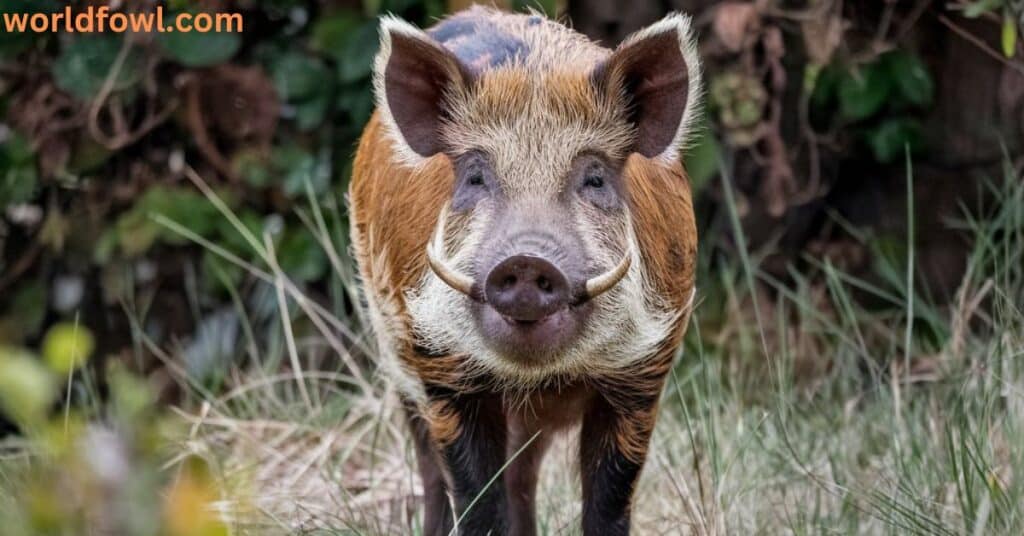Do wild pigs attack humans? In this detailed guide, we will explore the behavior of wild pigs, their potential to be dangerous, and how you can protect yourself if you ever encounter one in the wild. We will discuss why wild pigs might become aggressive, how frequent these attacks really are, and what steps you can take to stay safe in wild pig territories.
Wild pigs, also known as feral hogs or wild boars, have made a name for themselves in North America due to their increasing population and the potential threat they pose to both human activities and wildlife ecosystems. While many associate wild pigs with the occasional farmyard nuisance or a source of outdoor hunting adventure, these animals have been known to cause serious damage to crops, wildlife, and even human safety in certain circumstances.
What Are Wild Pigs?
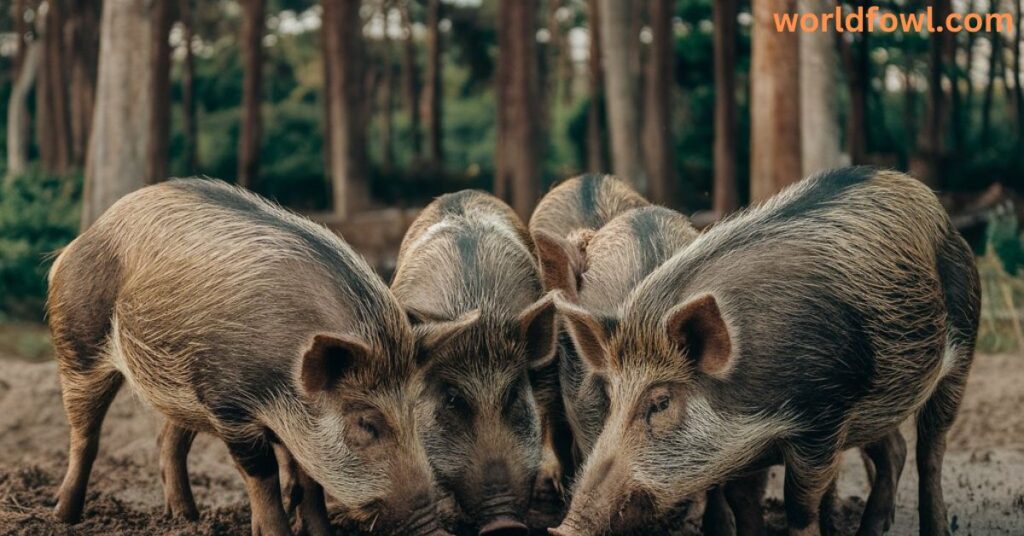
Before diving into the specifics of wild pig attacks, it’s essential to understand exactly what we’re dealing with. Wild pigs are not a single species but rather a group of animals that include both wild boars and feral pigs. These animals have a rich history, and their current behaviors and interactions with humans can be traced back to their origins.
Wild Boars vs. Feral Pigs
While wild boars and feral pigs are often lumped together, they have different genetic and behavioral backgrounds:
- Wild Boars (Sus scrofa): Wild boars are native to parts of Europe, Asia, and North Africa. These wild pigs are typically larger and more robust, with sharp tusks, and they thrive in forests and woodlands. Wild boars are highly territorial and tend to be more aggressive when threatened.
- Feral Pigs: Feral pigs, on the other hand, are domesticated pigs (Sus scrofa domesticus) that have escaped or been released into the wild. Feral pigs often show more adaptability than wild boars due to their exposure to human environments, making them more likely to venture into rural or suburban areas in search of food.
Feral pigs are the primary culprit behind many of the human-wild pig interactions in North America. These animals are often found in rural areas where they have easy access to food sources, such as crops, trash, and even garbage dumps. The rapid growth of the pig population in places like Texas wild pigs and Southeastern states has fueled concerns over their impact on local wildlife and human safety.
Physical Features of Wild Pigs
Wild pigs are incredibly adaptable animals. Their bodies are built for survival in many different environments, which makes them formidable when they are provoked. Some key features include:
- Tusks: These sharp, elongated teeth are one of the most dangerous aspects of wild pigs. They use their tusks for defense and for rooting around the ground to find food. During an attack, tusks can inflict severe deep cuts and goring wounds.
- Size and Strength: Adult wild pigs, particularly boars, can weigh anywhere from 150 to 400 pounds, with males being larger than females. Their powerful muscles, combined with quick reflexes, make them fast and capable of delivering dangerous blows.
- Senses: Wild pigs have an incredible sense of smell, which helps them locate food and potential threats. They also have sharp hearing, which allows them to detect predators or other intruders long before they are seen.
See Also : Do Wood Storks Attack Humans?
Do Wild Pigs Attack Humans?
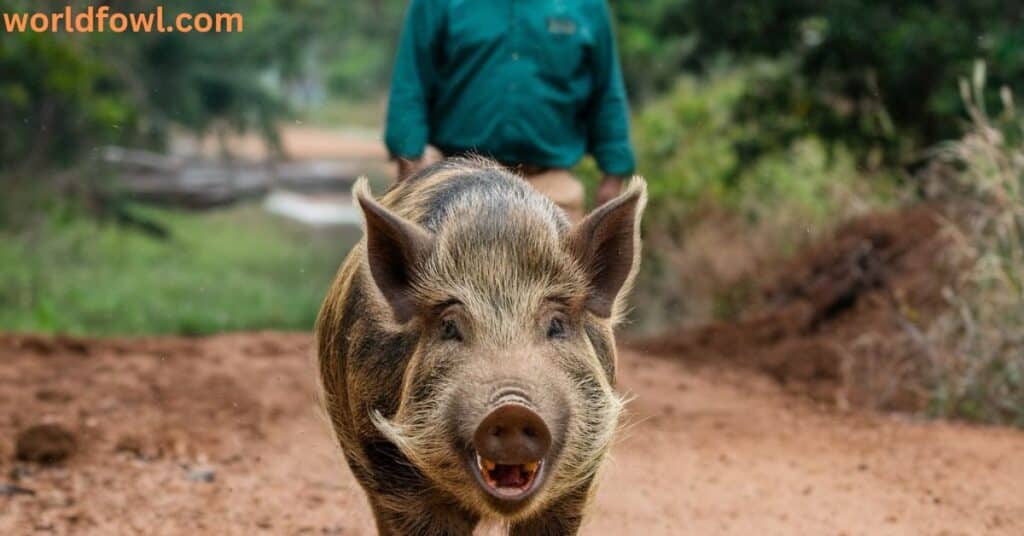
Aggression in Wild Pigs: The Surprising Reality
The notion that wild pigs are aggressive by nature is somewhat of a misconception. In general, wild pigs do not actively seek out human interaction. They are opportunistic feeders that typically avoid confrontations with humans. However, they are animals of instinct and can turn hostile under specific conditions.
So, when do wild pigs become dangerous? There are several key reasons why wild pigs might attack humans:
Defensive Behavior
One of the primary triggers for aggression in wild pigs is defensive behavior. Wild pigs, especially sows (female pigs), will aggressively protect their young if they feel threatened. This is particularly true when the young piglets are small and vulnerable. If a human or another animal gets too close to a piglet, the protective sow will charge to defend her offspring, even if it means running into a human.
Territorial Aggression
Males, or boars, can also become aggressive when protecting their territory, particularly during the mating season. A territorial boar might view a human or another animal as a rival, and as a result, it may charge or use its tusks to attack. This type of aggression is generally more common in wild boars than in feral pigs, as wild boars are more territorial by nature.
Fear and Surprise
Most wild pig attacks occur when the animals are startled. If a wild pig is caught off guard or feels trapped, it may resort to aggressive behavior out of fear. This is particularly likely if you encounter a wild pig while hiking or camping in a wooded area where you may not see the animal until you’re too close.
Hunger or Competition for Food
When wild pigs are hungry and are foraging for food, they may become more irritable, especially if they encounter a human or another animal that poses a perceived competition for food. Though wild pigs are usually shy when they are foraging, if a pig feels cornered or threatened, it might attack.
The Role of Tusks in Wild Pig Attacks
One of the most dangerous aspects of wild pig attacks is their tusks. The tusks of a wild pig are razor-sharp and can inflict severe goring injuries. Tusks are used during combat with other pigs, but when a wild pig attacks a human, it may charge and attempt to use its tusks as weapons.
A high-speed charge from a wild pig, particularly from a territorial boar or a sow protecting her young, can result in deep cuts and puncture wounds. These injuries can cause severe bleeding and, in some cases, even fatal injuries if not treated promptly.
How Wild Pig Attacks Unfold
A typical wild pig attack often unfolds in a few specific stages:
- Sudden Charge: If a wild pig feels threatened, it may immediately charge at high speed. Wild pigs can reach speeds of up to 30 miles per hour, which means it’s difficult to outrun them if you’re caught off guard.
- Use of Tusks: During the charge, the wild pig will likely use its tusks to strike its target. These tusks can cause deep cuts and lacerations, which can be life-threatening if they puncture vital organs or arteries.
- Biting and Ramming: Wild pigs are strong animals, and they may also use their powerful jaws to bite or ram into their target. This type of attack can cause significant trauma, especially if the victim falls or is knocked down.
See Also : Do Peacocks Attack Humans? Graceful But Deadly?
How Common Are Wild Pig Attacks?
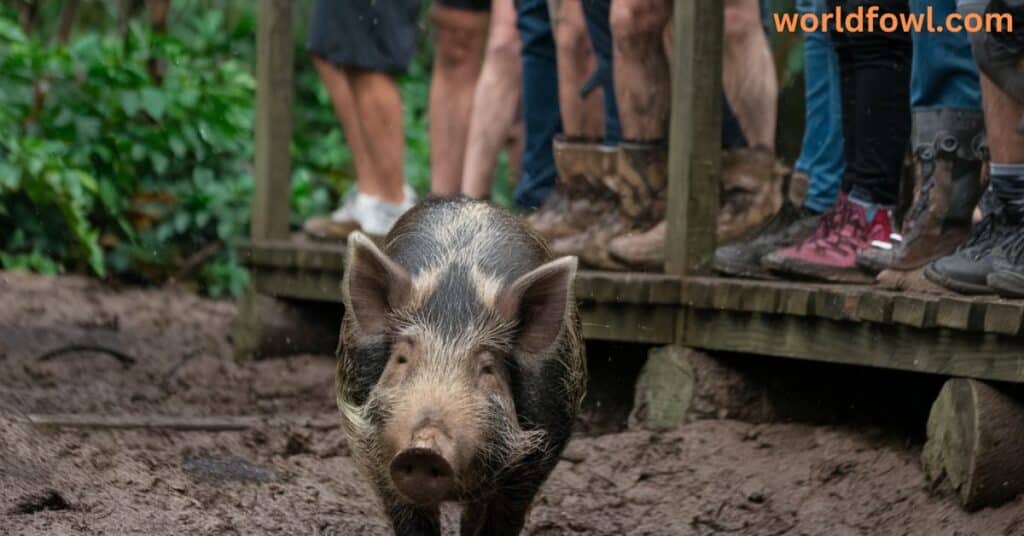
While it’s important to understand that wild pigs can attack humans, it’s also necessary to put the frequency of such attacks into perspective. In reality, wild pig attacks are relatively rare, though they do occur.
Frequency of Wild Pig Attacks
Although wild pig populations are on the rise, with Texas wild pigs and Southeastern states seeing the largest concentrations of these animals, attacks on humans remain uncommon. Wild pigs are more likely to avoid humans than to engage in direct conflict. However, when they do attack, the consequences can be serious, especially if the encounter occurs in a rural or forested area where escape is difficult.
Statistics on wild pig attacks are hard to come by, but studies suggest that the number of reported attacks is on the rise as the wild pig population continues to expand. It is estimated that wild pigs cause billions of dollars in damage annually, mostly related to crop damage and livestock predation, but direct attacks on humans still remain a relatively rare event.
Geographical Variations: Where Do Wild Pig Attacks Happen Most?
Certain regions are more prone to human-pig encounters due to the high concentration of wild pigs in those areas. Rural areas and farming regions are particularly susceptible to these encounters, as wild pigs often venture into human settlements in search of food.
- Texas Wild Pigs: Texas is home to one of the largest populations of wild pigs in the United States, making it a hotspot for wild pig-related issues. In these areas, farmers and ranchers are more likely to have direct contact with feral swine, and hikers or campers may find themselves at risk of an attack.
- Southeastern States: States like Florida, Georgia, and Alabama have high numbers of wild pigs. These states see more wild pig attacks due to the density of wild pigs and the proximity of humans to their habitats.
Risk Factors for Wild Pig Attacks
Several factors can increase the likelihood of encountering a wild pig, and potentially being attacked:
- Human presence in pig habitats: When humans encroach upon wild pig habitats, such as during outdoor activities like hiking or camping, the risk of a surprise encounter increases.
- Agricultural activity: Farmers dealing with crop damage may inadvertently attract wild pigs to their land, leading to more encounters.
- High population density: Areas with high concentrations of wild pigs, such as Southeastern states, will naturally see more interactions with humans.
See Also : Do Mongoose Attack Humans? Safety Tips!
How to Prevent Wild Pig Attacks
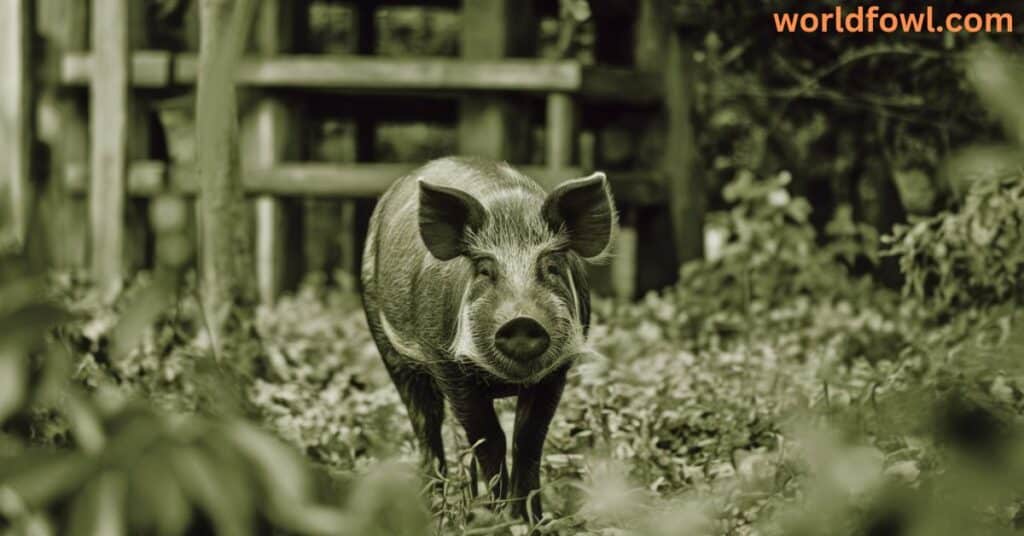
While wild pig attacks are rare, they are not impossible. Knowing how to stay safe when in wild pig territory is essential for minimizing risk.
Safety Tips for Avoiding Wild Pig Attacks
- Stay Alert: Always be aware of your surroundings when hiking or camping in areas known to have wild pigs. If you see signs of wild pigs, such as tracks or rooting, proceed with caution.
- Do Not Approach: Never approach wild pigs, even if they seem calm. Keep a safe distance, especially if they have piglets with them.
- Use Deterrents: Carry deterrents such as bear spray or loud noise devices. These can help scare off wild pigs if they approach too closely.
- Secure Food: If you’re camping or picnicking in areas frequented by wild pigs, make sure to store food in sealed containers and away from the ground to avoid attracting them.
- Avoid Habitats During Mating Season: Male wild pigs are more territorial during the mating season, so avoid hiking in areas during this time if possible.
Best Practices for Farming and Rural Areas
For those living or working in rural areas with high wild pig populations, additional precautions should be taken:
- Fencing: Install strong, tall fences around farms and livestock areas to keep wild pigs out.
- Pig Population Control: Work with local wildlife management authorities to implement population control measures, such as trapping and culling, to keep the number of wild pigs under control.
See Also : Can Geese Attack Humans? Geese Gone Wild
What to Do If Attacked by a Wild Pig
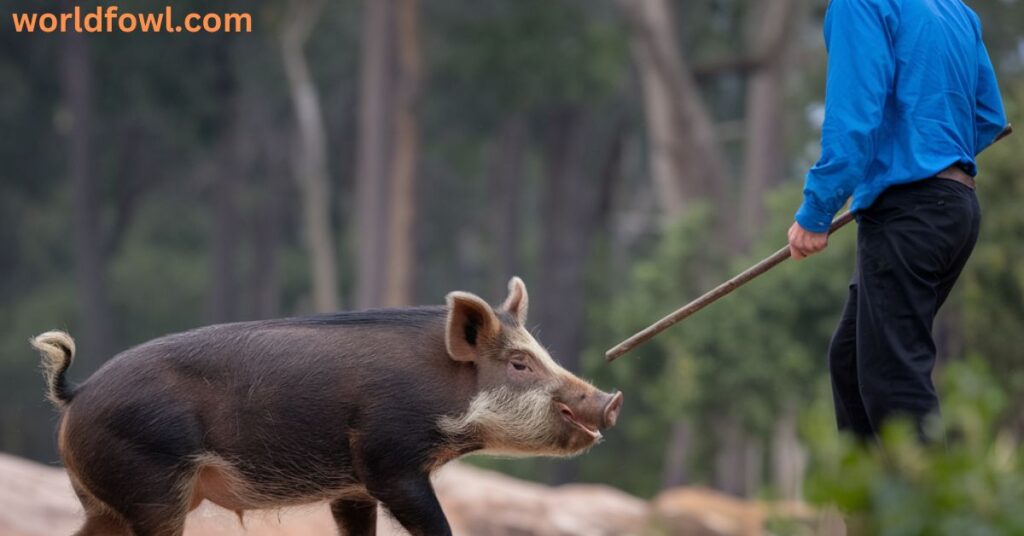
While taking precautions can reduce the likelihood of an attack, it’s still important to know how to react if you are confronted by a wild pig. Here’s what to do:
Immediate Response
- Stay Calm: Try to remain calm and avoid panicking. Look for an opportunity to escape or defend yourself.
- Defend Yourself: If the pig charges, try to protect vital areas such as your head and torso. Use any available object to fend off the pig.
- Get to Safety: If possible, climb a tree, vehicle, or structure to put yourself out of the pig’s reach.
After the Attack
- Seek Medical Attention: Even minor wounds can lead to infection. If you’ve been bitten or gored, seek medical help immediately to ensure proper wound care and to check for diseases like brucellosis or leptospirosis.
Final Verdict: Do Wild Pigs Attack Humans?
While wild pigs do pose some risk to humans, the reality is that wild pig attacks are not as common as one might think. Aggression typically arises from defensive behavior, fear, or territorial instincts, but with proper precautions, humans and pigs can coexist safely.
By understanding boar behavior and respecting their space, you can greatly reduce your chances of an attack. Always stay alert, especially in rural areas or areas with high wild pig populations, and remember that these animals, though powerful, are usually more interested in foraging for food than in engaging with humans.
FAQs: Do Wild Pigs Attack Humans
How dangerous are wild pigs to humans?
Wild pigs are generally not dangerous unless provoked. The high-speed charge and sharp tusks can cause serious injuries if an attack occurs.
What should I do if I see a wild pig?
Slowly back away and avoid eye contact. Never try to approach or feed the pig.
Are wild pig attacks fatal?
Fatalities are rare, but serious injuries like deep gashes and broken bones can occur.
Can wild pigs be deterred or scared away?
Yes, loud noises, bright lights, or certain deterrent sprays can help scare wild pigs away.
What are the best safety practices for outdoor activities in wild pig territories?
Be cautious, avoid provoking pigs, and carry safety tools like bear spray when hiking or camping.
Conclusion: Do Wild Pigs Attack Humans
In conclusion, wild pigs are generally not a significant threat to humans, but their potential for aggression should not be underestimated. While wild pig attacks are rare, they can still happen, particularly when pigs feel threatened, cornered, or surprised. By taking the proper precautions and respecting their space, humans can coexist with these resilient animals. Whether you’re a hiker, farmer, or simply someone living in wild pig territory, being aware of the behaviors and risks associated with wild pigs will help you avoid dangerous encounters and ensure your safety.

Henry James is a seasoned blogger and a passionate storyteller on “World Fowl.” With years of experience crafting engaging content, he brings a unique blend of expertise and creativity to his writing. Henry specializes in exploring diverse topics with depth and clarity, captivating readers worldwide.

